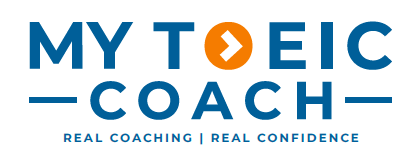✅ Mastering Word Families: Avoiding Parts of Speech Traps on TOEIC Part 5
Knowing a single word isn’t enough in Part 5 — you need to know its whole family.
If you can’t instantly switch between success, succeed, successful, and successfully, you’re walking straight into one of TOEIC’s most common traps.
💥 Why TOEIC Tests Word Families
Part 5 isn’t just testing vocabulary — it’s testing function.
The test checks whether you know how a word works in the sentence:
Noun vs verb
Adjective vs adverb
Same-looking words with different grammatical roles
It’s a quick way to see if you’re reading for structure, not just meaning.
🧪 Sample Question
The marketing team’s latest campaign was a huge ___ for the company.
A) succeed
B) success ✅
C) successful
D) successfully
Why B? The blank needs a noun (what the campaign was). Success is the noun; the others are different parts of speech.
🔄 Classic TOEIC Word Family Traps
effect (noun) vs affect (verb)
efficient (adjective) vs efficiency (noun)
applicant (noun) vs apply (verb) vs applicable (adjective)
decision (noun) vs decide (verb) vs decisive (adjective)
performance (noun) vs perform (verb) vs performer (noun)
These aren’t pure vocabulary tests — they’re grammar disguised as vocab.
🎯 How to Choose the Right Word Form
Read the whole sentence, not just the blank.
Ask: What part of speech is missing?
Describing a noun? → Adjective (effective)
Describing a verb? → Adverb (efficiently)
Doing the action? → Verb (apply)
Subject or object? → Noun (confidence)
⚠️ Common TOEIC Clues
Articles (a, the) → usually followed by a noun.
“To” + verb → base form of the verb.
“Be” + adjective → describes a state.
“Was done ___” → usually needs an adverb.
“One of the most ___” → superlative adjective.
Spot these, and you can often cut 2–3 wrong answers before thinking about meaning.
🧠 The Mindset Shift
When you see decision / decide / decisive / decisively, don’t ask “What do they mean?”
Ask “What job does this word need to do in the sentence?”
That single shift will boost both speed and accuracy.
Final Word
Word family questions are fast, frequent points once you’ve trained your eye for function. Learn nouns, verbs, adjectives, and adverbs together, and practise spotting what the sentence is asking for.
For more strategies and resources to master TOEIC grammar in context, visit the English Library Collection and start locking in word family accuracy today.

